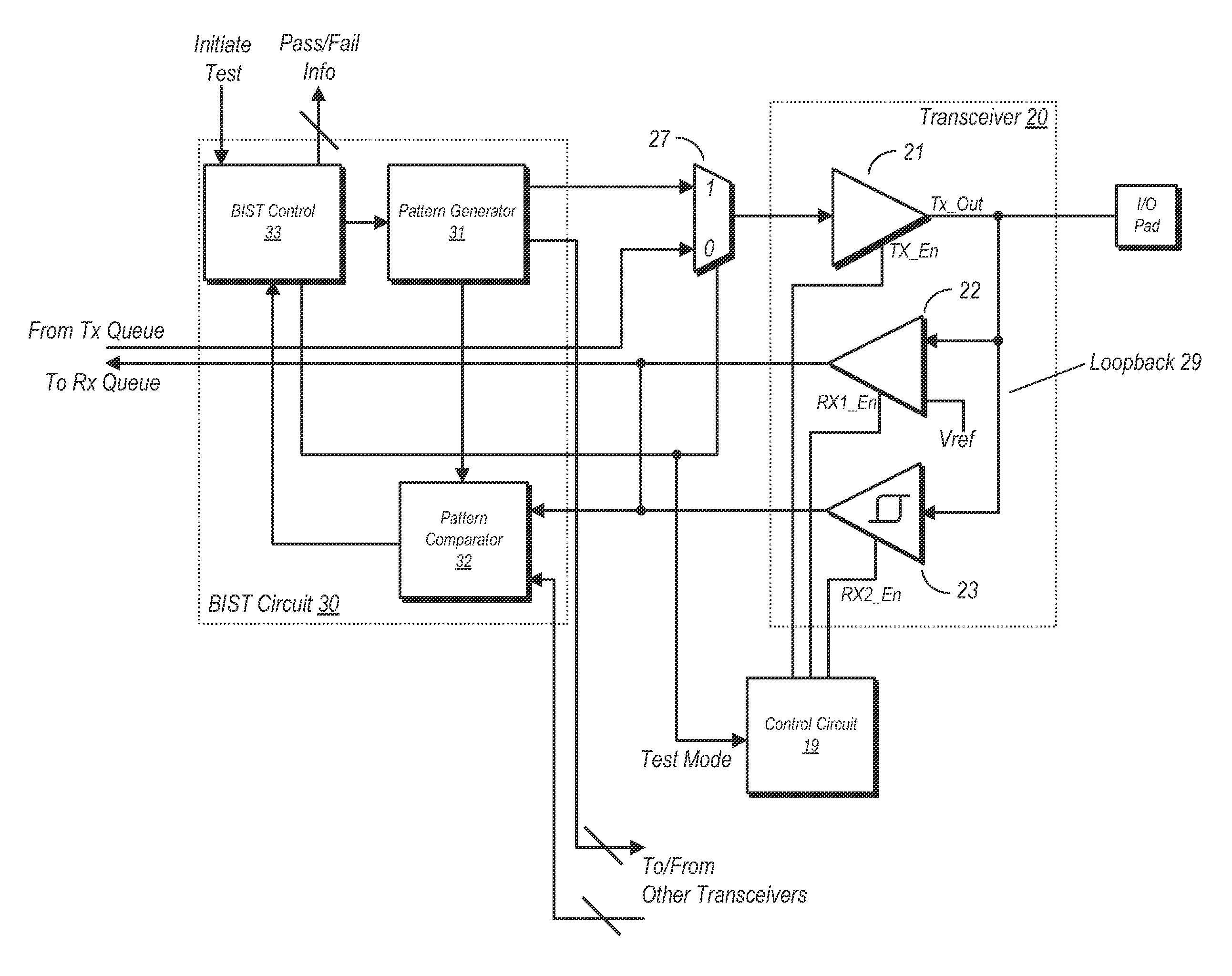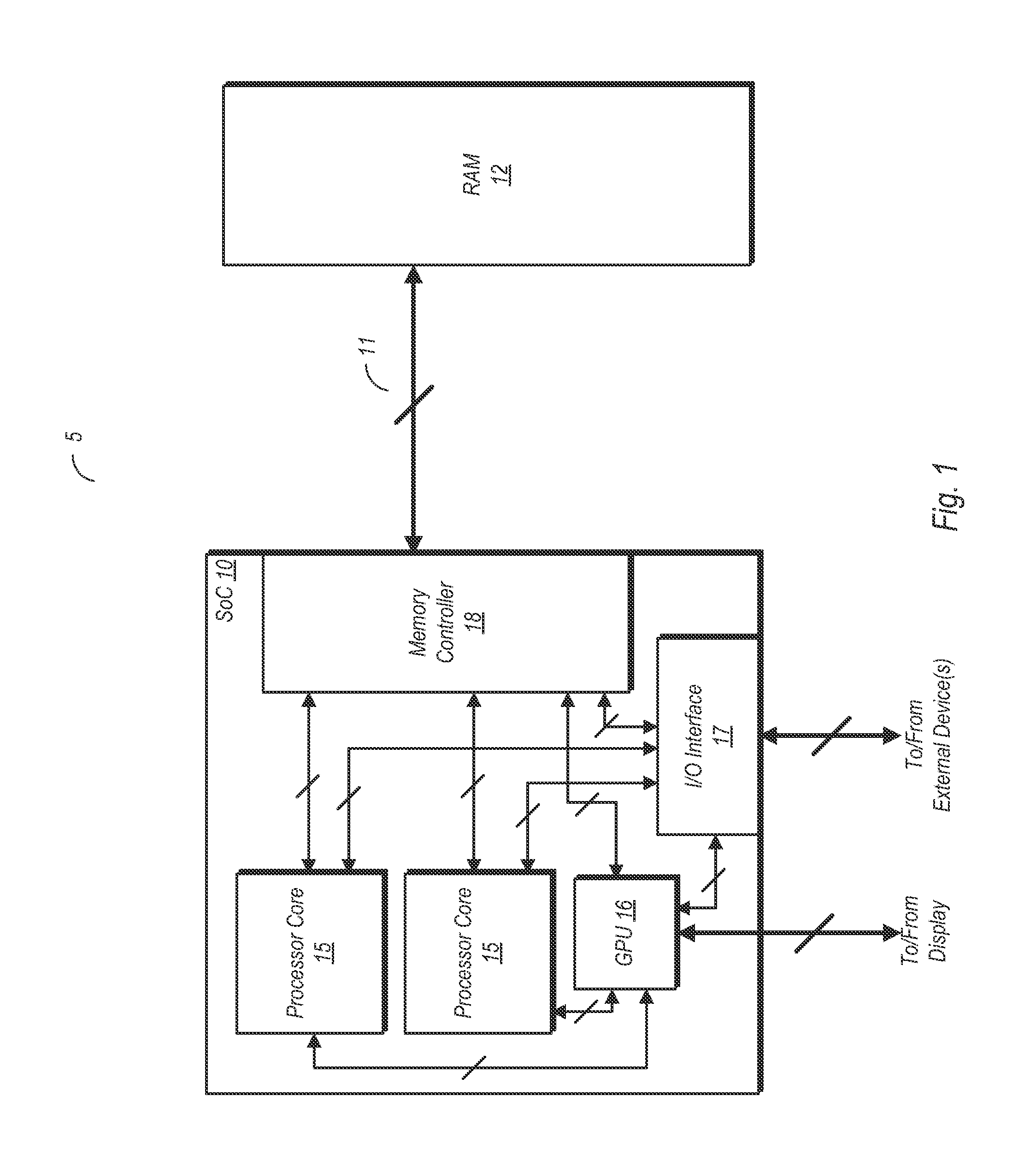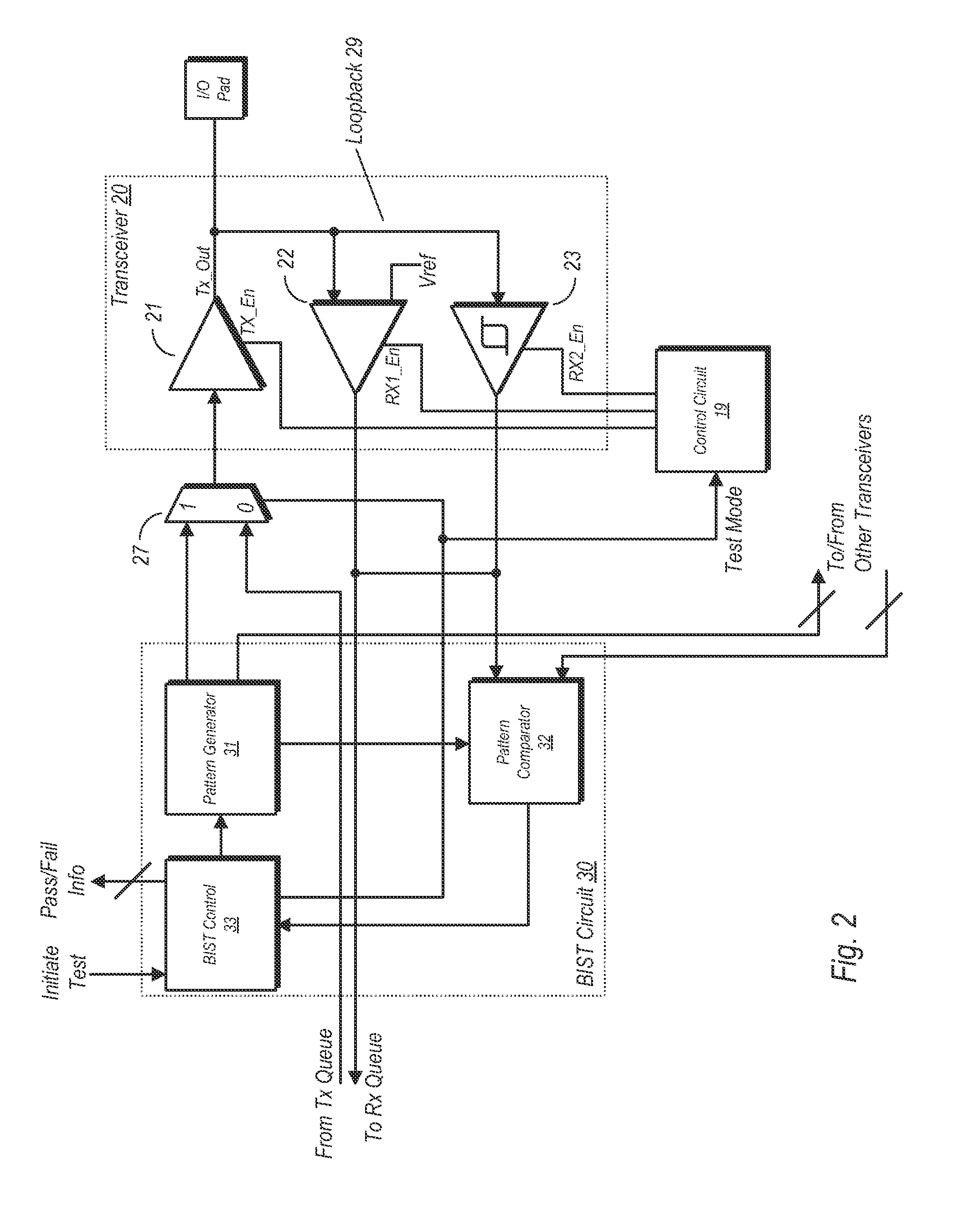Noise Rejection for Built-In Self-Test with Loopback
a loopback and self-testing technology, applied in the field of electronic systems, can solve problems such as glitches and erroneous logic value interpretations of the first receiver, and achieve the effect of eliminating glitches
- Summary
- Abstract
- Description
- Claims
- Application Information
AI Technical Summary
Benefits of technology
Problems solved by technology
Method used
Image
Examples
Embodiment Construction
[0017]Turning now to FIG. 1, a block diagram of one embodiment of a computer system including a system-on-a-chip (SoC) and a memory is shown. In the embodiment shown, computer system 5 includes SoC 10 and random access memory (RAM) 12. Although not explicitly shown, computer system 5 may also include other units, such as a display and one or more external devices. The term computer system 5 may be broadly applied, including desktop and laptop computers, tablet computers, various types of cellular phones including smart phones, and numerous other systems not explicitly mentioned here.
[0018]SoC 10 in the embodiment shown is a integrated circuit including two processor cores 15, a graphic processing unit (GPU) 16, and input / output (I / O) interface 17, and a memory controller 18.
[0019]Processor cores 15 may, among other functions, execute instructions for various software programs that may operate on computer system 5. Instructions and data for such software programs may be accessed from...
PUM
 Login to View More
Login to View More Abstract
Description
Claims
Application Information
 Login to View More
Login to View More - R&D
- Intellectual Property
- Life Sciences
- Materials
- Tech Scout
- Unparalleled Data Quality
- Higher Quality Content
- 60% Fewer Hallucinations
Browse by: Latest US Patents, China's latest patents, Technical Efficacy Thesaurus, Application Domain, Technology Topic, Popular Technical Reports.
© 2025 PatSnap. All rights reserved.Legal|Privacy policy|Modern Slavery Act Transparency Statement|Sitemap|About US| Contact US: help@patsnap.com



